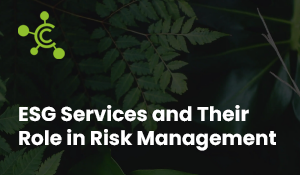Introduction
In the fight against climate change, carbon reporting has become a critical tool for businesses to measure and manage their environmental impact. As companies face growing pressure from governments, investors, and consumers to reduce their carbon footprint, understanding carbon reporting is essential. This post will explore what carbon reporting is, why it matters, and how businesses can implement effective carbon reporting practices.
What Is Carbon Reporting?
Carbon reporting involves the systematic measurement, documentation, and disclosure of a company’s carbon emissions. These emissions are typically categorized into three scopes:
- Scope 1: Direct emissions from owned or controlled sources, such as company vehicles and manufacturing processes.
- Scope 2: Indirect emissions from the generation of purchased electricity, steam, heating, and cooling consumed by the company.
- Scope 3: Other indirect emissions that occur in a company’s value chain, including both upstream and downstream activities, such as supplier emissions, business travel, and product use.
Carbon reporting can be either voluntary or mandatory, depending on the regulatory environment and the company’s location. Voluntary reporting often follows frameworks like the Carbon Disclosure Project (CDP) or the Greenhouse Gas Protocol, while mandatory reporting is typically dictated by national or regional regulations.
Why Carbon Reporting Matters
Carbon reporting is crucial for several reasons:
- Regulatory Compliance: As governments increasingly introduce carbon regulations and taxes, businesses must track and report their emissions to stay compliant. Failure to do so can result in hefty fines and legal penalties.
- Investor Expectations: Investors are increasingly prioritizing companies with strong carbon management practices. Transparent carbon reporting can improve a company’s ESG ratings and attract investment.
- Risk Management: Understanding and reporting carbon emissions allows companies to identify risks related to climate change, such as potential regulatory changes, physical risks from extreme weather, and shifting market dynamics.
- Reputation and Branding: Companies that actively manage and report their carbon emissions are viewed more favourably by consumers and other stakeholders, which can enhance brand loyalty and market positioning.
- Operational Efficiency: Tracking emissions can highlight inefficiencies in energy use, leading to cost-saving opportunities through improved energy management and waste reduction.
How to Conduct Carbon Reporting
Implementing carbon reporting involves several key steps:
- Define Your Reporting Boundaries:
- Determine the scopes and boundaries of your carbon reporting. Decide whether you will report on Scope 1, Scope 2, and/or Scope 3 emissions.
- Consider the geographic boundaries, operational boundaries, and time for your reporting.
- Collect Data:
- Gather data on all relevant emissions sources. This may include energy bills, fuel consumption records, travel logs, and supplier data.
- Ensure that your data collection methods are accurate and consistent to maintain the integrity of your report.
- Calculate Emissions:
- Use established methodologies, such as the Greenhouse Gas Protocol, to calculate your emissions.
- Convert your data into carbon dioxide equivalents (CO2e) to provide a standard measure of your emissions.
- Set Emissions Reduction Targets:
- Based on your carbon reporting, set realistic emissions reduction targets.
- Consider short-term and long-term goals and align them with broader sustainability initiatives.
- Disclose Your Findings:
- Prepare a carbon report that transparently discloses your emissions data, reduction targets, and progress.
- Share this report with stakeholders, including investors, customers, employees, and regulators, through sustainability reports, websites, or public disclosures.
- Implement Reduction Strategies:
- Based on your findings, develop and implement strategies to reduce your carbon emissions.
- This might include energy efficiency projects, transitioning to renewable energy, optimizing supply chains, or investing in carbon offsets.
Challenges and Best Practices
Carbon reporting comes with its challenges, including data accuracy, complex supply chains, and varying regulations. Here are some best practices to overcome these challenges:
- Automate Data Collection: Use software tools to automate the collection and processing of emissions data, reducing the likelihood of human error.
- Engage Suppliers: Work closely with suppliers to obtain accurate Scope 3 emissions data, which can be challenging but is critical for comprehensive reporting.
- Stay Informed: Keep up with the latest regulations and reporting standards to ensure compliance and relevance.
- Continuous Improvement: Carbon reporting is not a one-time task. Regularly review and update your emissions data and refine your reduction strategies based on new insights and technological advancements.
Conclusion
Carbon reporting is an essential component of any business’s sustainability strategy. It not only helps companies comply with regulations but also enhances their reputation, attracts investors, and improves operational efficiency. By understanding the importance of carbon reporting and implementing best practices, businesses can take meaningful steps toward reducing their carbon footprint and contributing to global sustainability efforts.




